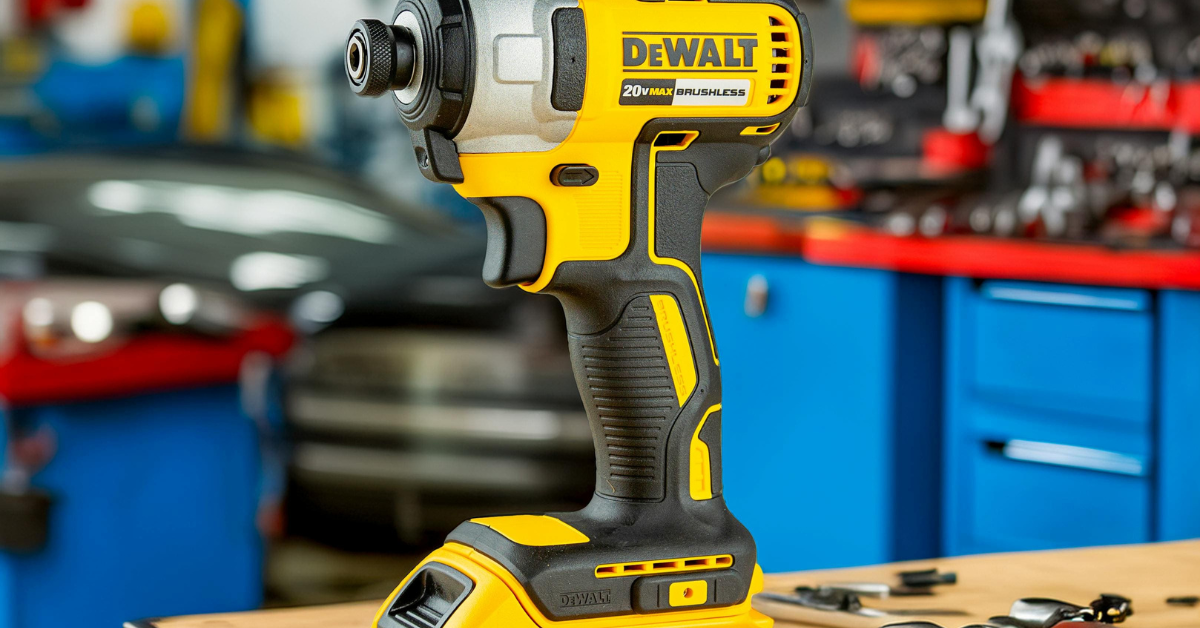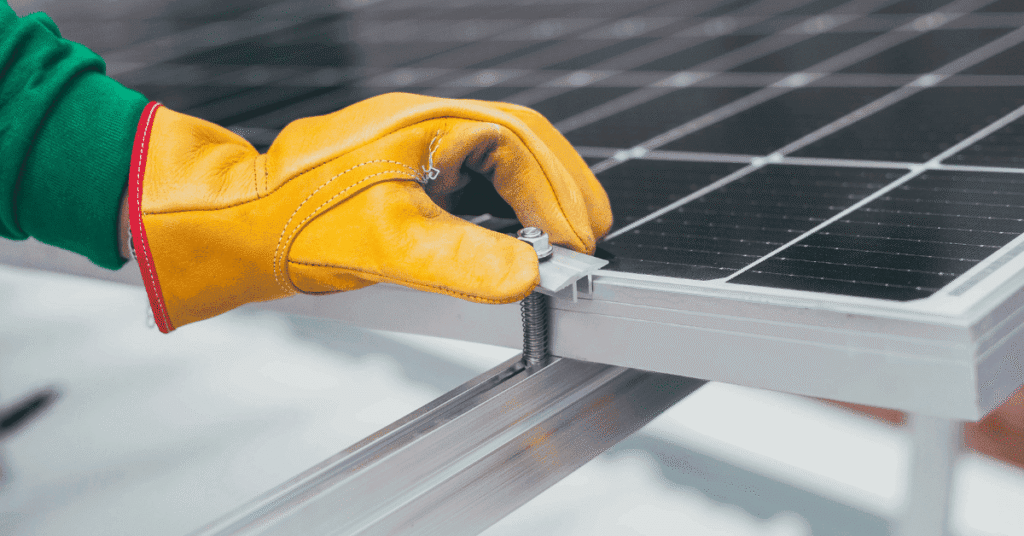Our Location
304 North Cardinal St.
Dorchester Center, MA 02124

In 2025, the industrial sector is undergoing a significant transformation, with sustainability at the forefront of technological advancements. Eco-friendly industrial power tools are playing a pivotal role in this shift, offering solutions that not only enhance performance but also reduce environmental impact.
This comprehensive guide delves into the evolution, benefits, challenges, and future trends of eco-friendly industrial power tools, providing insights into how these innovations are shaping the industry.
The journey of industrial power tools has been marked by continuous innovation. Early tools were manual, requiring significant human effort. The advent of electric-powered tools revolutionized industries by increasing efficiency and reducing labor. In recent years, there has been a conscious move towards sustainability, leading to the development of eco-friendly power tools.
Positive Sentiment: The transition to eco-friendly tools signifies a commitment to environmental stewardship and innovation.
Negative Sentiment: The initial investment in sustainable technologies can be high, posing challenges for small enterprises.
Modern eco-friendly power tools are characterized by several features that contribute to their sustainability:
The environmental benefits of adopting eco-friendly industrial power tools are substantial:
Positive Sentiment: These tools align with global efforts to combat climate change and promote sustainability.
Negative Sentiment: The environmental impact of manufacturing and disposal of batteries remains a concern.
The adoption of lithium-ion (Li-ion) batteries continues to rise, offering higher energy density, longer runtimes, and faster charging times compared to traditional nickel-cadmium (NiCd) batteries. This shift enhances the performance and portability of cordless tools, making them more appealing for industrial applications .
Manufacturers are incorporating smart features into power tools, such as IoT connectivity, mobile app integration, and real-time performance monitoring. These innovations enable predictive maintenance, improved efficiency, and enhanced user experience .
There is a growing emphasis on sustainability in the production of power tools. Companies are adopting eco-friendly manufacturing processes, using recyclable materials, and implementing energy-efficient production methods to reduce their environmental footprint .
Governments worldwide are enforcing stricter environmental regulations, such as the European Union’s Restriction of Hazardous Substances (RoHS) directive, which limits the use of harmful materials in manufacturing. Compliance with these standards is driving the development of eco-friendly power tools .
There is an increasing consumer preference for products that are environmentally friendly. This trend is prompting manufacturers to prioritize sustainability in their product offerings, leading to a rise in the availability of eco-friendly power tools in the market .
The global electric power tools market is projected to grow at a compound annual growth rate (CAGR) of 5.02% from 2022 to 2027, driven by the increasing demand for cordless tools and advancements in battery technology . In India, the power tool market is expanding due to government initiatives like “Make in India” and infrastructure development programs, which are boosting local manufacturing and demand for power tools .
The demand for eco-friendly industrial power tools is on the rise. In India, the power tools market is projected to grow from USD 686 million in 2023 to USD 1,563 million by 2033, driven by increasing construction activities and government initiatives like the National Infrastructure Pipeline and Smart Cities Mission .
Positive Sentiment: The growth indicates a shift towards sustainable practices in the industry.
Negative Sentiment: The rapid growth may lead to challenges in maintaining quality and sustainability standards.
Despite their benefits, the adoption of eco-friendly industrial power tools faces several challenges:
Positive Sentiment: Overcoming these challenges can lead to long-term benefits for businesses and the environment.
Negative Sentiment: Resistance to change and the higher upfront costs can hinder widespread adoption.
Advancements in technology are driving the development of more efficient and sustainable power tools:
Positive Sentiment: These innovations enhance the functionality and appeal of eco-friendly tools.
Negative Sentiment: Rapid technological changes can lead to obsolescence and increased electronic waste.
Governments worldwide are implementing policies to encourage the adoption of eco-friendly industrial power tools:
Positive Sentiment: Regulatory support accelerates the transition to sustainable industrial practices.
Negative Sentiment: Compliance with regulations can be challenging for small and medium-sized enterprises.

The future of eco-friendly industrial power tools looks promising:
Positive Sentiment: The future holds potential for significant advancements in sustainable industrial practices.
Negative Sentiment: The pace of change may be slow in regions with limited resources or infrastructure.
Eco-friendly industrial power tools represent a significant step towards sustainable industrial practices. While challenges exist, the benefits in terms of environmental impact, cost savings, and regulatory compliance make them a worthwhile investment. As technology advances and awareness increases, the adoption of these tools is expected to grow, leading to a more sustainable and efficient industrial sector.
Eco-friendly industrial power tools are equipment designed to reduce environmental impact through energy efficiency, lower emissions, recyclable materials, and sustainable manufacturing practices.
Sustainable power tools typically consume less energy, use rechargeable or alternative energy sources (like solar or battery), generate less noise, and are made from recyclable or biodegradable components.
Yes, many sustainable tools now match or even exceed the performance of traditional models thanks to advancements in battery technology, brushless motors, and efficient design.
Manufacturers use recycled plastics, aluminum, biodegradable composites, and non-toxic coatings to reduce environmental impact throughout the tool’s lifecycle.
While the initial cost may be slightly higher, eco-friendly tools often save money over time through lower energy use, reduced maintenance, and longer lifespans.
Modern lithium-ion and solid-state batteries offer cleaner, longer-lasting power without the emissions of gas-powered tools. Some brands also use recyclable or modular battery systems.
In some regions, businesses can receive tax breaks, grants, or rebates for switching to energy-efficient equipment, including eco-friendly industrial tools.
Check with local e-waste recycling centers or manufacturer take-back programs, which safely dismantle and recycle old tools and batteries.
Absolutely. Many companies now produce heavy-duty eco tools suitable for construction, manufacturing, and large-scale operations, without compromising on durability or performance.
Top brands like Bosch, Makita, DeWalt, and newer eco-focused companies like Greenworks Commercial are leading in sustainable innovations and green certifications.

Welcome! I am a dedicated entrepreneur running an industrial affiliate product website, helping businesses and professionals find the best tools, equipment, and resources for their needs. With a passion for industrial products and a keen eye for quality, I curate and recommend top-performing items that enhance efficiency and reliability.
Through my platform, I aim to simplify the buying process by providing valuable insights, expert reviews, and trusted affiliate links to high-quality industrial products. Whether you’re looking for the latest machinery, tools, or safety gear, I strive to connect you with the best solutions available.
Thank you for visiting, and I look forward to helping you make informed purchasing decisions!